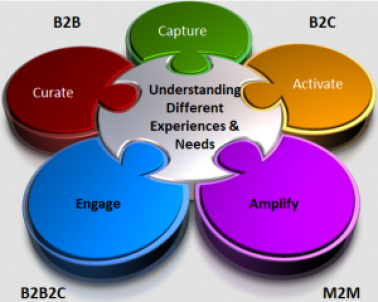 I have put some focus back on the platforms recently, as this is becoming a real imperative to understand the whole meaning and implications of platforms, with the necessary management they require, so as to enable us to rethink different business models for the future.
I have put some focus back on the platforms recently, as this is becoming a real imperative to understand the whole meaning and implications of platforms, with the necessary management they require, so as to enable us to rethink different business models for the future.
There are without doubt real business implications in taking on a platform strategy as they really will be having such a transforming effect on all we do within companies and way beyond with others, including customers and even past competitors. They uproot the present and much of the established practicies.
They are changing the face of markets, industries, and competition but we within the established business world, mostly formed in the 20th centure seem slow to recognize their incredible impact, if we applied this platform thinking towards our own business, what would it mean?
There is a recognition that all innovation does not occur inside, it occurs from ‘open’ collaboration. It occurs from engagement and appreciating many others have better insights and possible answers, it is the power of combining them that has such economic consequence and great value creation potential. Our businesses are all becoming based on platforms.
The difficulty for many of us is first understanding what a platform is all about. The getting a clearer picture of the different types of platforms. Each has different tasks in building their specific “network effect” and how they are set up to interact and the type of problems they are attempting to solve. Some are really open, some are seeking growth, some are seeking collaborators to come together and work on ‘cracking’ more complex problems that one individual company would not be able to do.
In some of my recent updating of the platform breaking scene, I came across a terrific site that has created an open initiative to help entrepreneurs and organizations of all sizes to relate and build successful platform businesses, called Platform Hunt.
 Many innovators are familiar with the concept of the
Many innovators are familiar with the concept of the  There are significant differences between the ecosystems we might consider. Let’s reflect a little here, some recap and explore some further thoughts.
There are significant differences between the ecosystems we might consider. Let’s reflect a little here, some recap and explore some further thoughts.
 In case you were hibernating or out of range of cell cover or WiFi during the last few days, you know that Amazon has made an offer to acquire Whole Foods.
In case you were hibernating or out of range of cell cover or WiFi during the last few days, you know that Amazon has made an offer to acquire Whole Foods.
 It had to come to this eventually. The emergence of Blockchain and distributed ledger systems illustrates how innovation is moving from focus on products and services, which are interesting but don’t provide a long-lasting competitive advantage, to a focus on platforms and ecosystems.
It had to come to this eventually. The emergence of Blockchain and distributed ledger systems illustrates how innovation is moving from focus on products and services, which are interesting but don’t provide a long-lasting competitive advantage, to a focus on platforms and ecosystems.
 Our experiences determine to a large degree, success or failure. When you are reliant on others to collaborate and exchange knowledge, for the better good, you need to make sure there is a consistent validation process.
Our experiences determine to a large degree, success or failure. When you are reliant on others to collaborate and exchange knowledge, for the better good, you need to make sure there is a consistent validation process. Jeffrey wrote a recent post “
Jeffrey wrote a recent post “